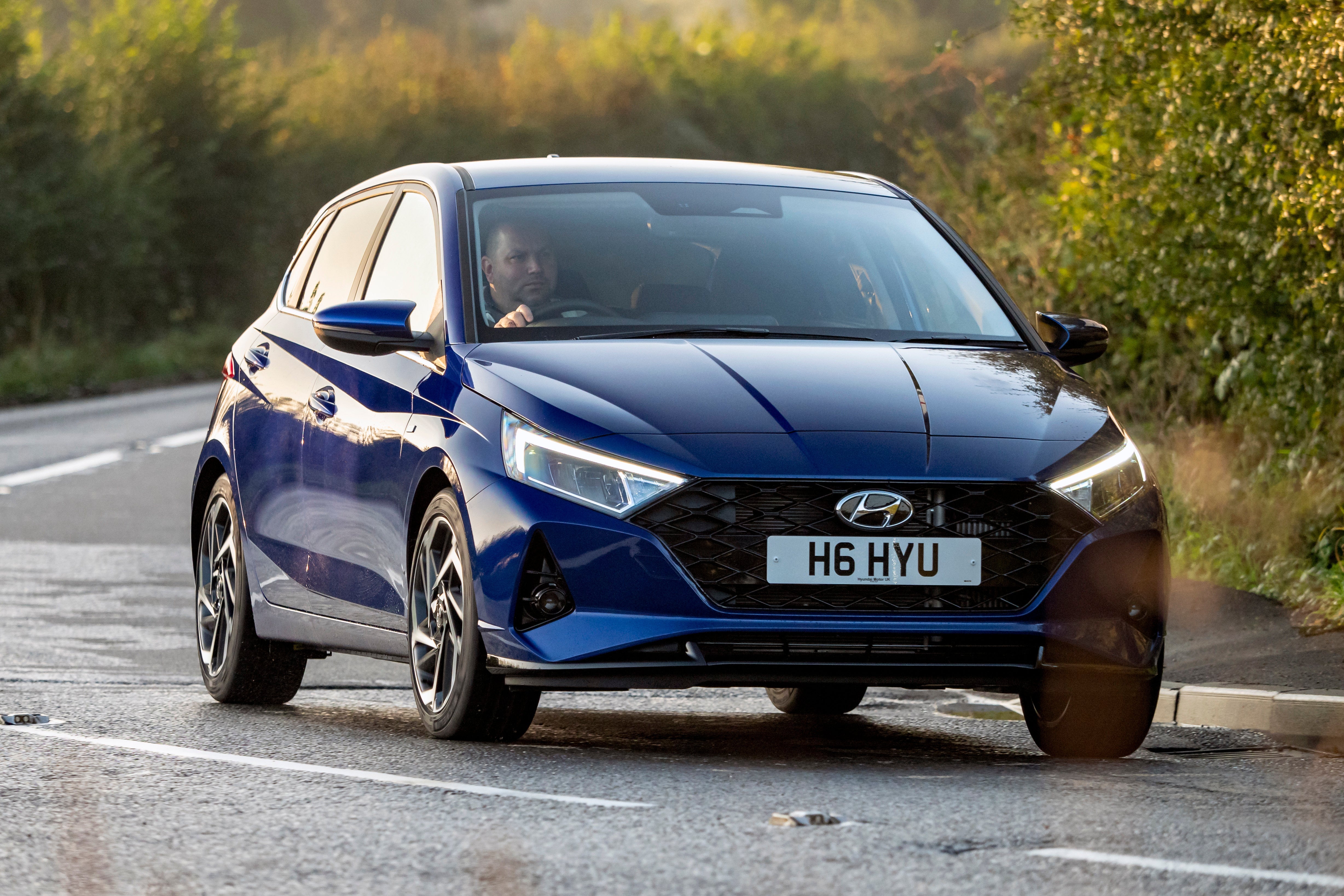Hyundai i20 Review 2025: Price, specs & boot space
Written by Matt Robinson
Quick overview
Pros
- Generous equipment levels
- Spacious back seat
- Mild-hybrid engine is perky and cheap to run
Cons
- Drab interior fails to inspire
- Ride could be more comfortable
- Rivals are more desirable ownership propositions
Verdict: Is the Hyundai i20 a good car?
"Ten years is a long time in the car world and the Hyundai i20 is a small car that shows you just how far things have come, thanks to an equipment list that would match a top-of-the-range saloon from a decade ago."
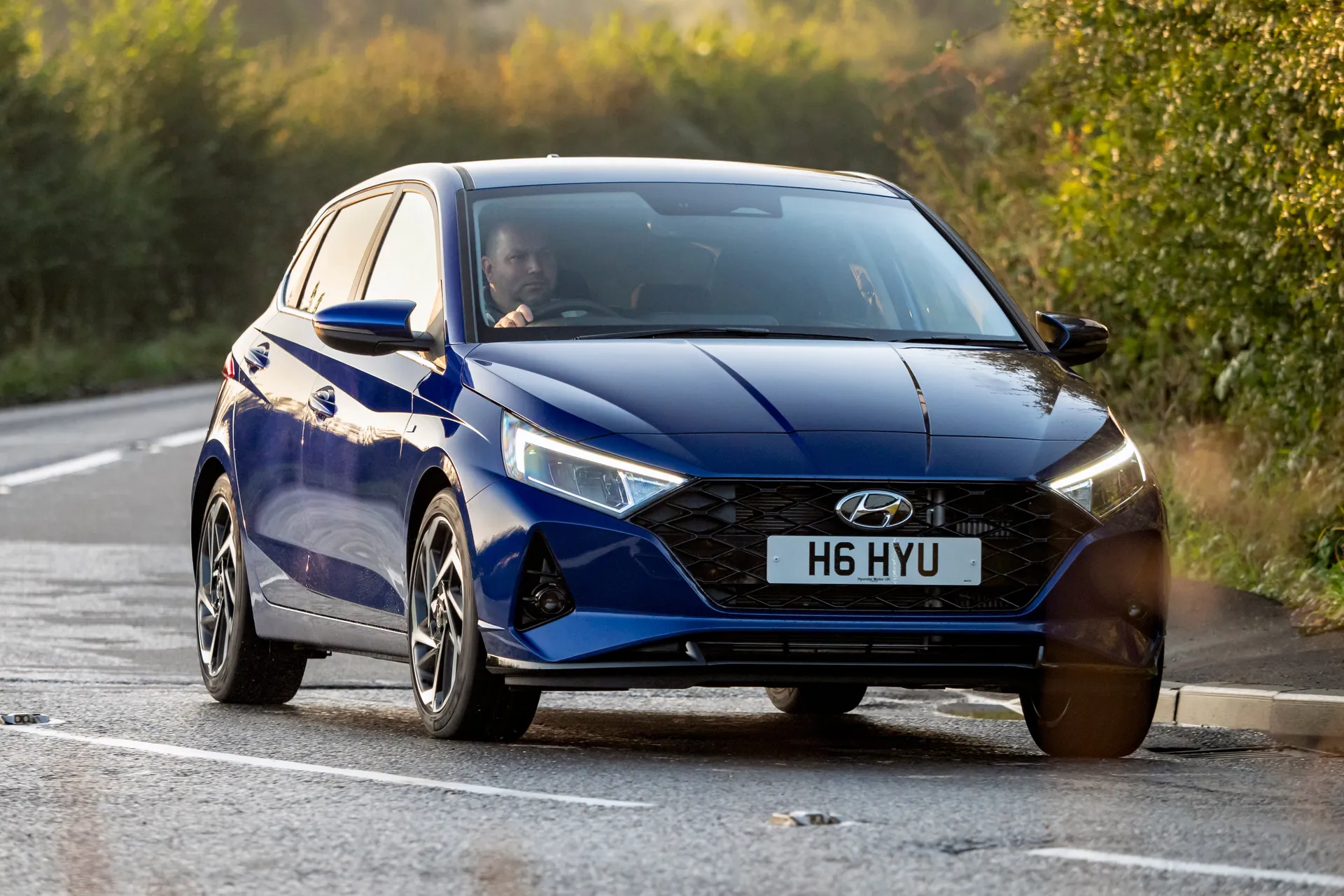
It's one of the most complete and best small cars available today and we'll explain why in our in-depth Hyundai i20 review.
Jump inside the Hyundai i20, and you’re met by two large displays including a digital instrument binnacle that used to only be an option on posh Audis. The centre touchscreen, meanwhile, is quick and slick to use, and comes as standard with Apple CarPlay and Android Auto so you can use your phone’s apps on the car’s big screen.
Okay, so the Hyundai i20's interior quality isn’t brilliant – a couple of levels down from a Volkswagen Polo, in fact – but even basic models get cruise control and air conditioning, while mid-range cars add heated seats and a heated steering wheel.
Space is another Hyundai i20 strongpoint. There’s loads of room up front for tall adults and even if you're a towering specimen, tall passengers behind you won’t find their knees jammed against the back of your seat. Factor in the relatively large and well-shaped boot and this is the perfect small hatchback for you if you have a growing family.
The old Hyundai i20 was practical, too, but what it didn’t have is the high-tech engine you get in this new car. As well as being a tiny, three-cylinder turbocharged petrol engine, it has a 48V power supply that allows for mild-hybrid technology giving decent performance and excellent fuel economy: you’ll get 50mpg without even trying. It’s the only engine available, with the exception of the 1.6-litre turbocharged petrol engine used in the now-discontinued i20 N hot hatch.
In standard form, the Hyundai i20 isn’t the kind of small car you’ll yearn to drive, but it grips well in corners and doesn’t suffer from too much lean. That said, a Volkswagen Polo does both those things, but is better at soaking up bumps in the road, and is quieter.
The fact is, the Hyundai i20 lacks a little bit of polish, but it makes up for this with a comprehensive suite of electronic driving aids. Top-of-the-range models can steer themselves on the motorway and have active cruise control that can accelerate and brake for you.
You still have to do the driving in town, but the i20’s excellent visibility makes it easy to negotiate your way through bustling streets. Plus, rear parking sensors and a boot-mounted camera come as standard, so you can easily squeeze into tight parking spaces.
But can the i20 squeeze into your life? Well, the Ford Fiesta is more fun to drive, while the Toyota Yaris and VW Polo are more comfortable and feel posher, but the Hyundai gets close to its rivals on all of these fronts, is more spacious and has more equipment. If you like the sound of that, it should be right up your street.
Looking for a used car for sale? We've got 100s of Hyundai Approved Used Cars for Sale for you to choose from, including a wide range of Hyundai i20 cars for sale. If you're looking for the older version, you need our used Hyundai i20 (2015-2020) review.
Is the Hyundai i20 right for you?
If you’re not swayed by badges, a sporty drive or try-hard posh interiors then, yes, the Hyundai could be the car for you. Its pair of large infotainment screens make it feel pretty high tech and even the basic model has plenty of equipment.
Factor in the spacious interior and Hyundai’s excellent five-year warranty, and this is a car that could give your family half a decade’s worth of fault-free motoring.
What other cars are similar to the Hyundai i20?
When it comes to small hatchbacks, there's no shortage of choice with some excellent cars on the market. There’s the fun-to-drive Ford Fiesta, classy Volkswagen Polo, spacious Skoda Fabia, full hybrid Toyota Yaris, stylish SEAT Ibiza, trendy MINI Cooper and many more. It pays to test try out as many cars as possible to find the one that suits you best.
Comfort and design: Hyundai i20 interior
"The Hyundai i20 gets all the basics right. Its interior has an intuitive design that’s easy to use with reactive infotainment screens that are logically laid out and simple to navigate."
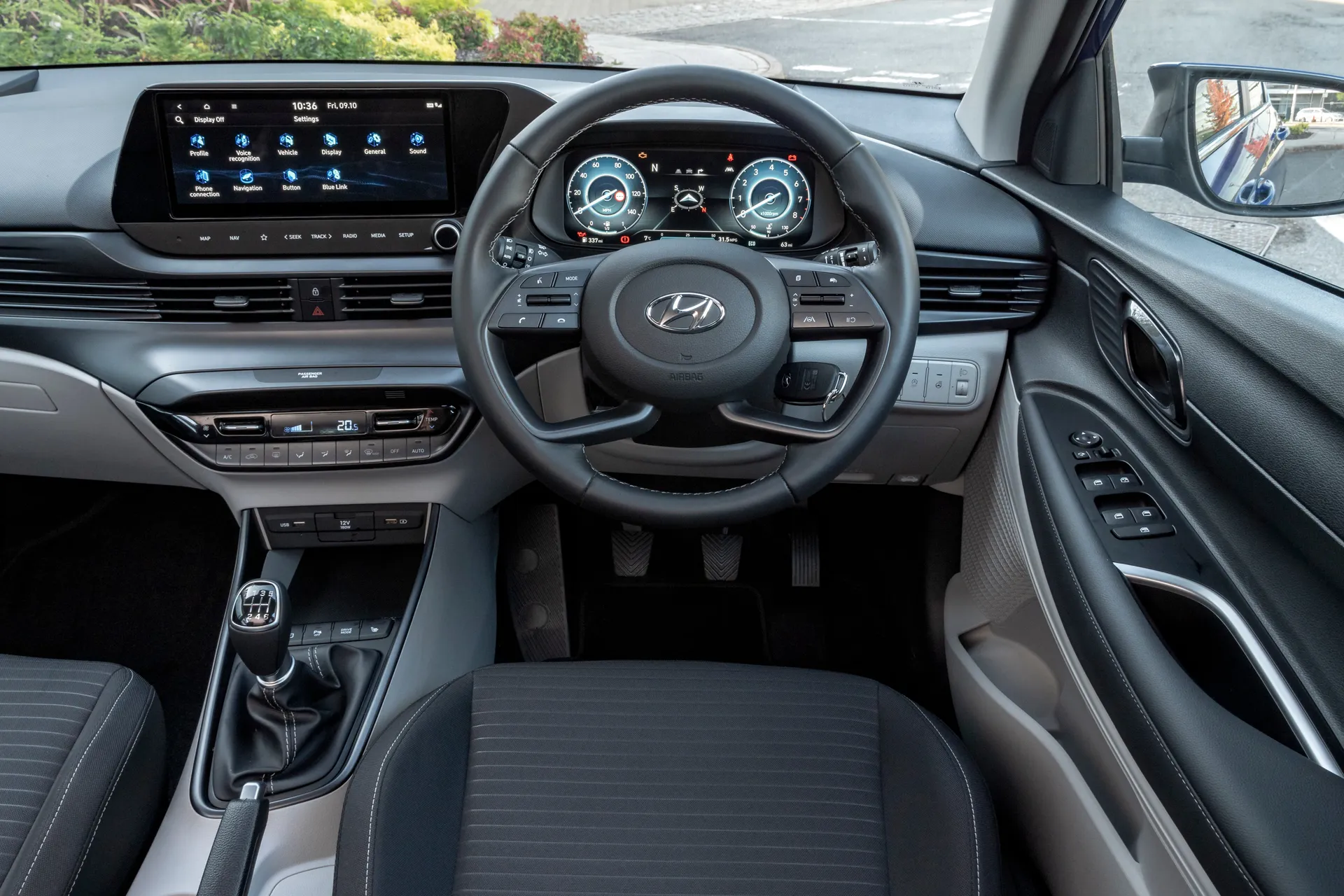
The driving position of the Hyundai i20 is also spot on. You can get your seat low to the floor for a hunkered-down feel or ratchet it up for a better view out. The steering wheel also offers lots of movement up and down, and in and out.
There’s loads of room for your size tens in the footwell, and you also get somewhere to rest your left foot when it's not pumping the clutch pedal. Even the gear shifter is within easy reach of your hand and its precise action makes it easy to slot in and out of gears.
But while it’s easy to get on with, there’s not much that's inspiring about the Hyundai i20’s cabin. The plastics are dark and shiny, and even the car’s screens – big though they are – aren't as colourful or as crisp as the ones in a Volkswagen Polo.
What you can't quibble with is the amount of standard equipment that’s on offer with the Hyundai i20. All cars get a leather-trimmed steering wheel and gear knob, so the main touchpoints feel posh, and you also get cruise control and air conditioning, while Premium models and above add heated seats and a heated steering wheel.
Quality and finish
Interior quality isn’t one of the Hyundai i20’s strong points. None of its plastics are soft to the touch like in a Volkswagen Polo, Ford Fiesta or Toyota Yaris.
Sure, you get some interesting ribbed trims that intersect between the air vents, and lighter plastics in the lower half of the cabin help brighten it up. But this doesn’t make up for the large swathe of plastic that sweeps across the bottom of the dashboard and looks like it had a past life as chocolate box packaging.
The design itself is also a bit plain, with neither the high-tech feel you get in most Polos, or the sculpted shapes found in a Yaris. If plain and simple works for you, though, the Hyundai i20 will be just the ticket.
Infotainment: Touchscreen, USB, nav and stereo in the Hyundai i20
While its not the prettiest looking, the Hyundai i20's infotainment is very good. Even the most basic model comes with an 8.0-inch central touchscreen and a 10.25-inch digital instrument binnacle. You also get Apple CarPlay and Android Auto, so all the apps you love on your phone – like Google Maps and Spotify – work on the car’s big screen.
Go for the Premium model and you swap the 8.0-inch central touchscreen for a 10.25-inch version (the larger item was later made standard across the range). It comes with a five-year free subscription to Hyundai’s connected service so you can do things like check on the car’s location and open it remotely using Hyundai’s Bluelink app.
The infotainment’s graphics have a blue hew that looks a bit 90s hi-fi, and the graphics themselves aren’t the sharpest. But while it looks a little dated, its quick reactions and recognition of gestures such as 'pinch' and 'swipe' mean it is one of the slickest systems to use that you'll find fitted to a car of this size.
Ultimate models go a step further than the rest of the range by swapping the weedy standard stereo for a Bose system with eight speakers including a subwoofer, though we’ve yet to sample how good it is in practice.
Space and practicality: Hyundai i20 boot space
In the front, the Hyundai i20 has all the room tall adults need and the cabin is wide enough that you don’t have to worry about bashing your passenger's knee when you’re changing gear.
The front seats slide a long way back on their runners, so even if you're tall, you’ll have room to spare and the seats' flat squabs make them comfortable on long journeys.
The biggest revelation comes in the back seat where your six-foot passengers will find they have plenty of knee room even if you're a similar height sitting in front of them. Again, the width of the car means two people in the back have loads of elbow and hip room, and you’ll squeeze a third passenger in the middle without hearing too many grumbles.
Small rear doors mean squeezing a child seat into place is a little tricky, and because of the Hyundai’s low body, you’ll have to lean down to get it located into the car’s ISOFIX points. But that’s also true of all the i20's rivals.
The Hyundai i20's boot space is also comparable to the competition: the i20’s 352-litre load capacity is just three litres smaller than you get in the Volkswagen Polo and its square shape makes it easy to fill. With the adjustable boot floor in its highest setting, you get a tiny load lip to lift luggage over, and with the back seats folded down, total capacity sits at a healthy 1165 litres.
If you're buying a small hatchback to fit in a small garage or narrow parking space, you'd be interested to know the Hyundai i20 is 4040mm long (exactly the same as a Ford Fiesta), 1775mm wide (not including door mirrors) and 1450mm high.
Handling and ride quality: What is the Hyundai i20 like to drive?
"The Hyundai i20 isn’t as entertaining as a Ford Fiesta or as comfortable as a Volkswagen Polo, but it manages to be a jack of all trades in a cut-throat class."
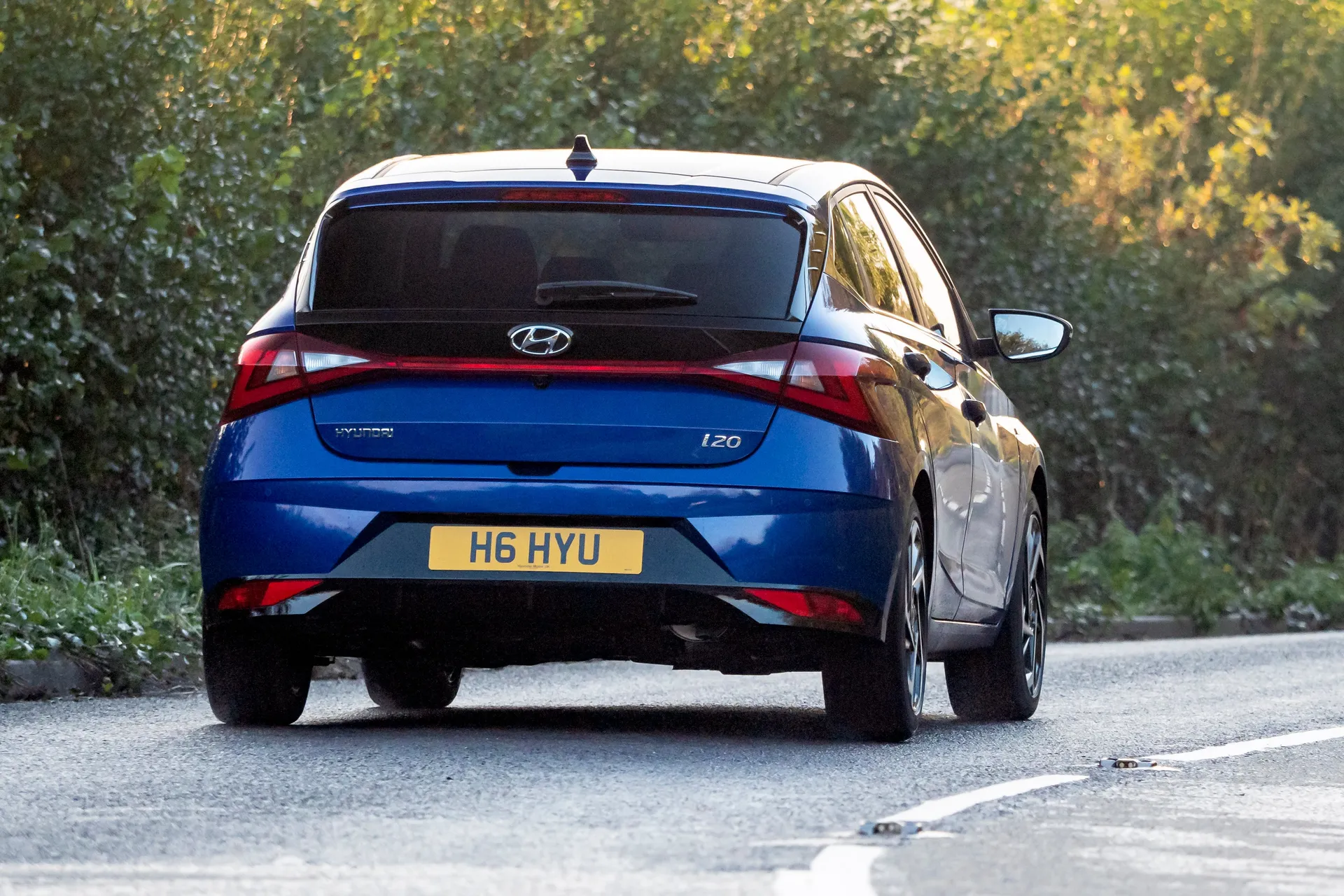
Not many people buy a small family car with the sole intention of ragging it around corners but compared to a model like the Ford Fiesta, the Hyundai i20 feels a bit stodgy.
Its steering is about as communicative as someone who's just been hit over the head with a cricket bat and the fake resistance engineered into it – for a sporty, weighty feel – really just makes it numb and obstructive. You'll be much better served by a Ford Fiesta if you want a car you can enjoy in corners. A shame, because the i20 grips with tenacity and doesn't lean too much in corners.
That said, the Hyundai i20 is a little crashy over bumps. It doesn't breath with the road like a Volkswagen Polo can, and it doesn't have the Polo's unflustered nature of a car that feels larger than it is, either. The i20 we drove had 17-inch wheels, so it might be worth trying one with the smaller 16-inch ones.
In most other respects, the i20 is a comfortable car on a long-distance hoof. It's relatively quiet and is available with an extensive suite of autonomous driving aids that take the stress out of monotonous motorway work.
The Hyundai i20 is also an easy car in town. At slower speeds, the steering sheds its fake weightiness, being light and precise, and you get decent visibility through all corners. Even if you're not a huge fan of backing into spaces, all cars come with the safety net of a reversing camera and rear parking sensors, which makes parking a simple job.
What engines and gearboxes are available in the Hyundai i20?
Hyundai only offers the i20 with one engine, but it’s a high-tech 1.0-litre three-cylinder that’s boosted by a turbocharger to produce 100PS and 172Nm of torque. That gets it from 0-62mph in 10.4 seconds in six-speed manual form, or 11.4 seconds if you go for the optional seven-speed dual-clutch automatic.
Keep the gears low – the i20 does 70mph in second – and you’ll be rewarded with reasonable performance, although the i20 doesn't have the lazy mid-range you get from other small turbocharged petrols like this, and it's also more noisy than tuneful when you give it some revs.
The gearshift is surprisingly tight and precise, though, so stirring the gears is no hardship. Okay, so you get some throbbing vibrations through the steering wheel and pedals, but that’s true of most cars with three-cylinder engines.
Also worthy of note is the Hyundai i20's fuel-saving 48V power supply and oversized starter motor. It’s a combination that means the i20 can turn off its engine before you’ve come to a stop, coast on the motorway and can even provide a boost of power getting off the line. Don't expect to bimble around town under electric power alone, though: this isn't a full hybrid setup.
Refinement and noise levels
The Hyundai i20 doesn’t quite give you the big-car refinement you’ll find in rivals like the Volkswagen Polo and Toyota Yaris, but it’s still pretty civilised.
Alright, so you get more tyre noise than in the aforementioned competition – we’d advise going for a car with 16-inch alloy wheels instead of the 17s fitted to our test car – but there’s not much wind noise to speak of. Engine noise, meanwhile, is noticeable under acceleration, but settles down once you're cruising.
Safety equipment: How safe is the Hyundai i20?
The i20’s list of standard safety kit wouldn’t have looked out of place in a flagship Mercedes S-Class brochure from 10 years ago.
Under Hyundai’s umbrella of SmartSense safety features, you get six airbags, automatic emergency braking, a blind-spot warning system, and eCall, which can call the emergency services and share your location if you’re involved in a serious accident.
It’s also available with Hyundai’s active cruise control. It can brake the car when there’s slower-moving traffic in front before returning to a preset cruising speed when the way is clear, but it can also use information from the sat-nav to slow for corners and read road signs to adhere to the speed limit.
This version of the i20 was tested for crash safety by Euro NCAP in 2021, and earned four (out of five) stars.
MPG and fuel costs: What does a Hyundai i20 cost to run?
"Thanks to its small capacity and 48V mild-hybrid technology, the i20 is very economical on fuel with more than 50mpg readily achievable, and up to 60mpg possible at a steady cruise."
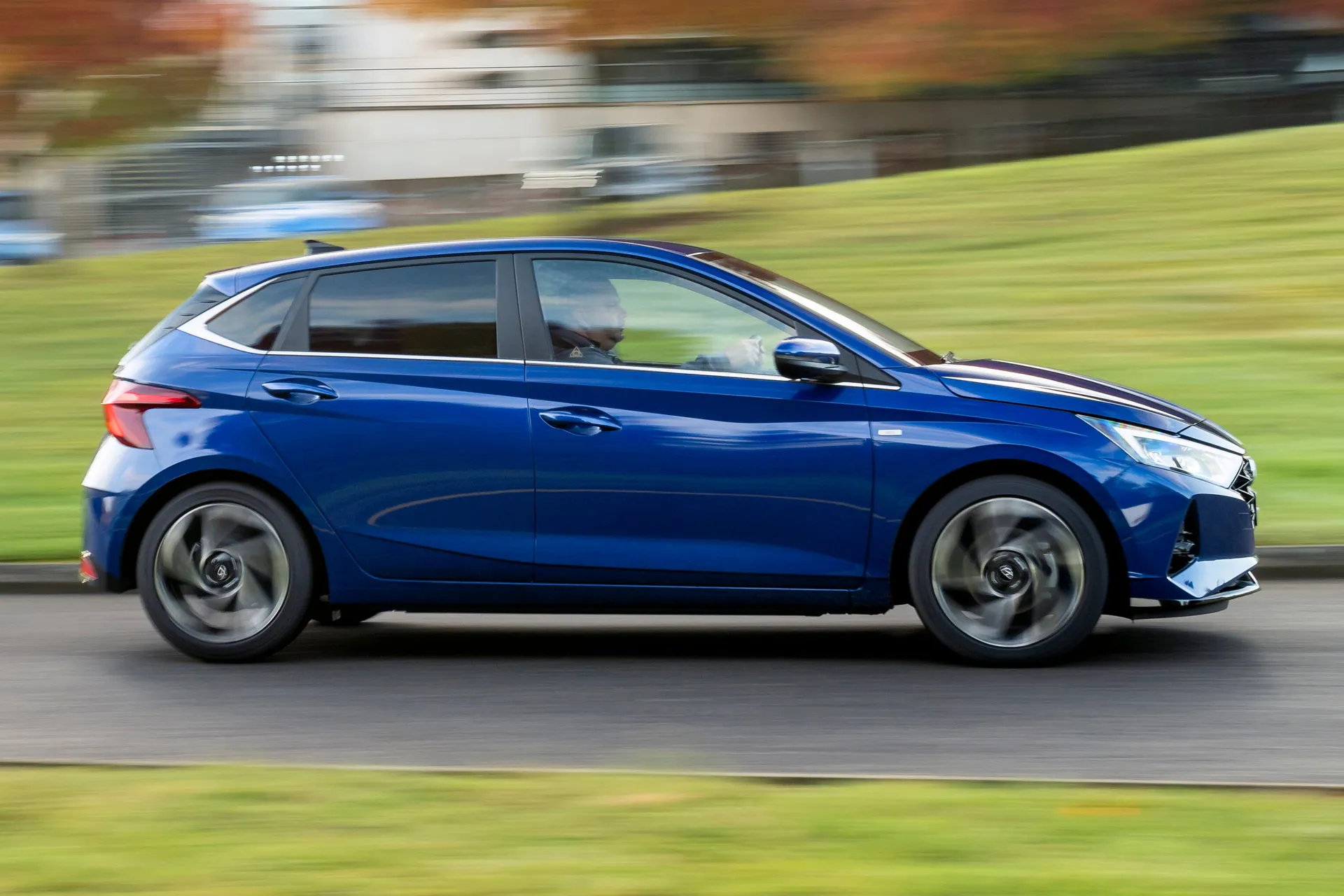
That means a range of 500 miles is doable from the Hyundai i20’s 45-litre fuel tank, making it surprisingly long-legged for a small petrol-powered car.
Hyundai i20 reliability and warranty
Hyundai makes some very reliable cars, and sure enough, the brand placed 10th (out of 33) in the reliability rankings of the latest HonestJohn.co.uk Satisfaction Index. That likely dependability is backed up by a transferable five-year, unlimited-mileage warranty, which is one of the best in the business.
Hyundai i20 insurance groups and costs
Depending on the trim level you go for (not including the N hot hatch), the Hyundai i20 will sit between insurance groups 12 and 16. It won't be the cheapest of superminis to insure, then, but it won't break the bank, either.
VED car tax: What is the annual road tax on a Hyundai i20?
Since April of 2025, the i20 is taxed at the same flat rate as all other modern cars, whether they're powered by petrol, diesel, electricity, fairy dust, or anything else. That flat rate is currently charged at £195 per year.
You won't have to worry about the steep luxury car surcharge, either. That only applies to cars that cost £40,000 or more when brand new, and no version of the i20 gets anywhere near that.
Hyundai i20 price
"These days, prices for a brand new i20 start at around £22,000 for the base-level Advance-trimmed car, while prices rise to upwards of £25,000 for cars at the very top of the range."
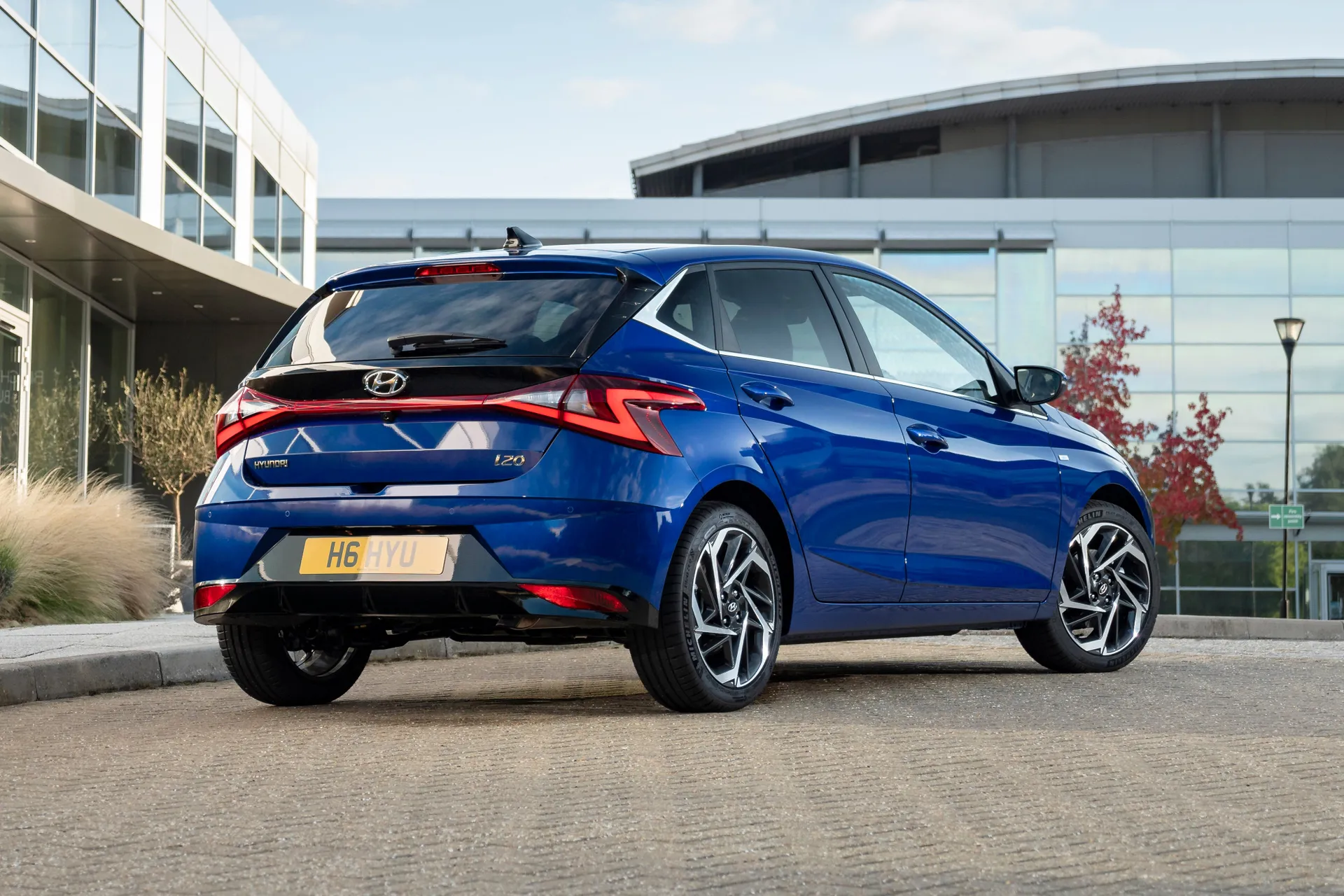
Browse the heycar classifieds, though, and you'll find some very useful savings on used examples. There are numerous examples for around the £11,000 mark, and most of these are basic SE Connect cars (not a problem because they're still well equipped) of about three- or four years old with anything between 30,000- and 50,000 miles on the clock. Or for similar money, you should find a Premium-trimmed car wearing a few more miles. All that means that these used examples will still covered by a good chunk of Hyundai's generous five-year, unlimited-mileage warranty.
Trim levels and standard equipment
One of the Hyundai i20’s most obvious strengths is its extremely generous level of equipment.
Standard kit on the outside includes 16-inch alloy wheels and LED daytime running lights with fog lights that light up corners at night. Inside, you get an 8.0-inch centre touchscreen (this was later upgraded to the 10.25-inc item enjoyed by the rest of the range) and 10.25-inch digital instrument binnacle, plus air conditioning, cruise control, reversing sensors, a rearview camera and electrically adjustable and heated door mirrors.
The Hyundai i20 Premium looks more sporty thanks to its larger 17-inch wheels, tinted windows and chrome trim. The i20 Premium also gets bright-shining LEDs front and rear, which look prettier than the filament bulbs on basic SE Connect (later renamed Advance) cars.
Inside, you’ll find handy features such as a dimming rearview mirror, automatic wipers and climate control that maintains a set cabin temperature automatically. It looks nicer inside thanks to the glowing mood lighting and you also get heated seats and a heated steering wheel that help take the sting out of a chilly winter morning. Finally, the infotainment screen is updated with that 10.25-inch touchscreen, which you can connect to remotely using Hyundai's Bluelink app to do things like check the car's location and unlock it remotely.
The ultimate trim level is called, well, the Hyundai i20 Ultimate. It gets a two-tone paint job as standard, while inside, kit includes keyless entry, wireless phone charging and an eight-speaker Bose stereo.
There have also been sporty trims called N Line and N Line S, which add a variety of racy flourishes inside and out.
Ask the heycar experts: common questions
Which car is better – Volkswagen Polo or Hyundai i20?
Is the Hyundai i20 good on a long drive?
Is the Hyundai i20 safe?
Get our latest advice, news and offers
Keep me updated by email with the latest advice, news and offers from heycar.
By submitting you agree to our privacy policy
